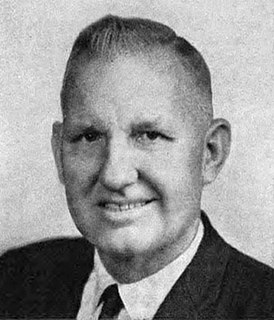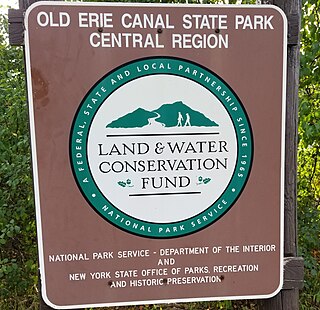The Carl D. Perkins Vocational and Technical Education Act was first authorized by the federal government in 1984 and reauthorized in 1990 (Perkins II), 1998 (Perkins III), 2006 (Perkins IV), and 2018 (Perkins V). Named for Carl D. Perkins, the act aims to increase the quality of technical education within the United States in order to help the economy. [1]
On July 31, 2018, President Donald Trump signed into law the re-authorization of the Act of 2018. The new law, the Strengthening Career and Technical Education for the 21st Century (Perkins V) Act, was passed almost unanimously by Congress.
The Perkins IV re-authorization included three major areas of revision:
- Using the term "career and technical education" instead of "vocational education"
- Maintaining the Tech Prep program as a separate federal funding stream within the legislation
- Maintaining state administrative funding at 5 percent of a state's allocation
The Perkins IV law also included new requirements for “programs of study” that link academic and technical content across secondary and post-secondary education, and strengthened local accountability provisions that will ensure continuous program improvement.
The Perkins Act provides $1.2 billion in federal support for career and technical education programs in all 50 States, including support for integrated career pathways programs. [2] The law was extended through 2024.
Education reform is the name given to the goal of changing public education. The meaning and education methods have changed through debates over what content or experiences result in an educated individual or an educated society. Historically, the motivations for reform have not reflected the current needs of society. A consistent theme of reform includes the idea that large systematic changes to educational standards will produce social returns in citizens' health, wealth, and well-being.

The United States Department of Education is a Cabinet-level department of the United States government. It began operating on May 4, 1980, having been created after the Department of Health, Education, and Welfare was split into the Department of Education and the Department of Health and Human Services by the Department of Education Organization Act, which President Jimmy Carter signed into law on October 17, 1979.
K–12, from kindergarten to 12th grade, is an American expression that indicates the range of years of publicly supported primary and secondary education found in the United States, which is similar to publicly supported school grades before college in several other countries, such as Afghanistan, Australia, Canada, China, Ecuador, Egypt, India, Iran, the Philippines, South Korea, and Turkey.
The Workforce Investment Act of 1998 was a United States federal law that was repealed and replaced by the 2014 Workforce Innovation and Opportunity Act.

Carl Dewey Perkins, a Democrat, was a politician and member of the United States House of Representatives from the state of Kentucky serving from 1949 until his death from a heart attack in Lexington, Kentucky in 1984.
The Women's Educational Equity Act (WEEA) of 1974 is one of the several landmark laws passed by the United States Congress outlining federal protections against the gender discrimination of women in education. WEEA was enacted as Section 513 of P.L. 93-380. Introduced in the United States House of Representatives by Congresswoman Patsy Mink of Hawaiʻi, the legislation was conceived and drafted by Arlene Horowitz, a staff assistant to the education subcommittee on which Mink served. WEEA was intended to combat sex-role stereotyping in elementary and secondary schools.

The Elementary and Secondary Education Act (ESEA) was passed by the 89th United States Congress and signed into law by President Lyndon B. Johnson on April 11, 1965. Part of Johnson's "War on Poverty", the act has been one of the most far-reaching pieces of federal legislation affecting education ever passed by the United States Congress, and was further emphasized and reinvented by its modern, revised No Child Left Behind Act.
The Small Business Innovation Research program is an American government program, coordinated by the Small Business Administration, intended to help certain small businesses conduct research and development (R&D). Funding takes the form of contracts or grants. The recipient projects must have the potential for commercialization and must meet specific U.S. government R&D needs.
A Pell Grant is a subsidy the U.S. federal government provides for students who need it to pay for college. Federal Pell Grants are limited to students with financial need, who have not earned their first bachelor's degree, or who are enrolled in certain post-baccalaureate programs, through participating institutions. Originally known as a Basic Educational Opportunity Grant, it was renamed in 1980 in honor of Democratic U.S. Senator Claiborne Pell of Rhode Island. A Pell Grant is generally considered the foundation of a student's financial aid package, to which other forms of aid are added. The Federal Pell Grant program is administered by the United States Department of Education, which determines the student's financial need and through it, the student's Pell eligibility. The U.S. Department of Education uses a standard formula to evaluate financial information reported on the Free Application for Federal Student Aid (FAFSA) for determining the student's Expected Family Contribution (EFC).

The Juvenile Justice and Delinquency Prevention Act of 1974 (JJDPA) is a United States federal law providing formula grants to states that follow a series of federal protections on the care and treatment of youth in the juvenile justice and criminal justice systems.

The Higher Education Act of 1965 (HEA) was legislation signed into United States law on November 8, 1965, as part of President Lyndon Johnson's Great Society domestic agenda. Johnson chose Texas State University, his alma mater, as the signing site. The law was intended "to strengthen the educational resources of our colleges and universities and to provide financial assistance for students in postsecondary and higher education". It increased federal money given to universities, created scholarships, gave low-interest loans for students, and established a National Teachers Corps. The "financial assistance for students" is covered in Title IV of the HEA.

The United States' Land and Water Conservation Fund (LWCF) is a federal program that was established by Act of Congress in 1965 to provide funds and matching grants to federal, state and local governments for the acquisition of land and water, and easements on land and water, for the benefit of all Americans. The main emphases of the fund are recreation and the protection of national natural treasures in the forms of parks and protected forest and wildlife areas. The LWCF has a broad-based coalition of support and oversight, including the National Parks Conservation Association, Environment America, The Wilderness Society, the Land Trust Alliance, the Nature Conservancy, the National Wildlife Federation, and The Conservation Fund.
The Historic Preservation Fund (HPF) provides financial support for historic preservation projects throughout the United States. The fund is administered by the National Park Service (NPS), pursuant to the National Historic Preservation Act of 1966 (NHPA). The fund provides state historic preservation agencies with matching funds to implement the act.
The Rehabilitation Services Administration (RSA) is a federal agency under the United States Department of Education, Office of Special Education and Rehabilitative Services, and is headquartered within the Department of Education in Washington, D.C. It was established to administer portions of the Rehabilitation Act of 1973. Its mission is to provide leadership and resources to assist state and other agencies in providing vocational rehabilitation (VR) and other services to individuals with disabilities to maximize their employment, independence and integration into the community and the competitive labor market.

An authorization bill is a type of legislation used in the United States to authorize the activities of the various agencies and programs that are part of the federal government of the United States. Authorizing such programs is one of the powers of the United States Congress. Authorizations give those things the legal power to operate and exist. Authorization bills must be passed in both the United States House of Representatives and the United States Senate before being signed by the President of the United States in order to become law. They may originate in either chamber of Congress, unlike revenue raising bills, which must originate in the House. They can also be considered at any time during the year.
The America Creating Opportunities to Meaningfully Promote Excellence in Technology, Education, and Science Act of 2007 or America COMPETES Act was authored by Bart Gordon and signed by President George W. Bush; it became law on 9 August 2007. This was an Act, "To invest in innovation through research and development, and to improve the competitiveness of the United States."

On December 19, 2006, the Pandemic and All-Hazards Preparedness Act (PAHPA), Public Law No. 109-417, was signed into law by President George W. Bush. First introduced in the House by Rep. Mike Rogers (R-MI) and Rep. Anna Eshoo (D-CA), PAHPA had broad implications for the United States Department of Health and Human Services's (HHS) preparedness and response activities. Among other things, the act amended the Public Health Service Act to establish within the department a new Assistant Secretary for Preparedness and Response (ASPR); provided new authorities for a number of programs, including the advanced development and acquisitions of medical countermeasures; and called for the establishment of a quadrennial National Health Security Strategy.

The Older Americans Act of 1965 was the first federal level initiative aimed at providing comprehensive services for older adults. It created the National Aging Network comprising the Administration on Aging on the federal level, State Units on Aging at the state level, and Area Agencies on Aging at the local level. The network provides funding – based primarily on the percentage of an area's population 60 and older – for nutrition and supportive home and community-based services, disease prevention/health promotion services, elder rights programs, the National Family Caregiver Support Program, and the Native American Caregiver Support Program.

The Workforce Innovation and Opportunity Act (WIOA) is a United States public law that replaced the previous Workforce Investment Act of 1998 (WIA) as the primary federal workforce development legislation to bring about increased coordination among federal workforce development and related programs.

The Pandemic and All-Hazards Preparedness and Advancing Innovation Act (PAHPAI) is legislation introduced and passed by the U.S. Congress in 2019 that aims to improve the nation's preparation and response to public health threats, including both natural threats and deliberate man-made threats.




